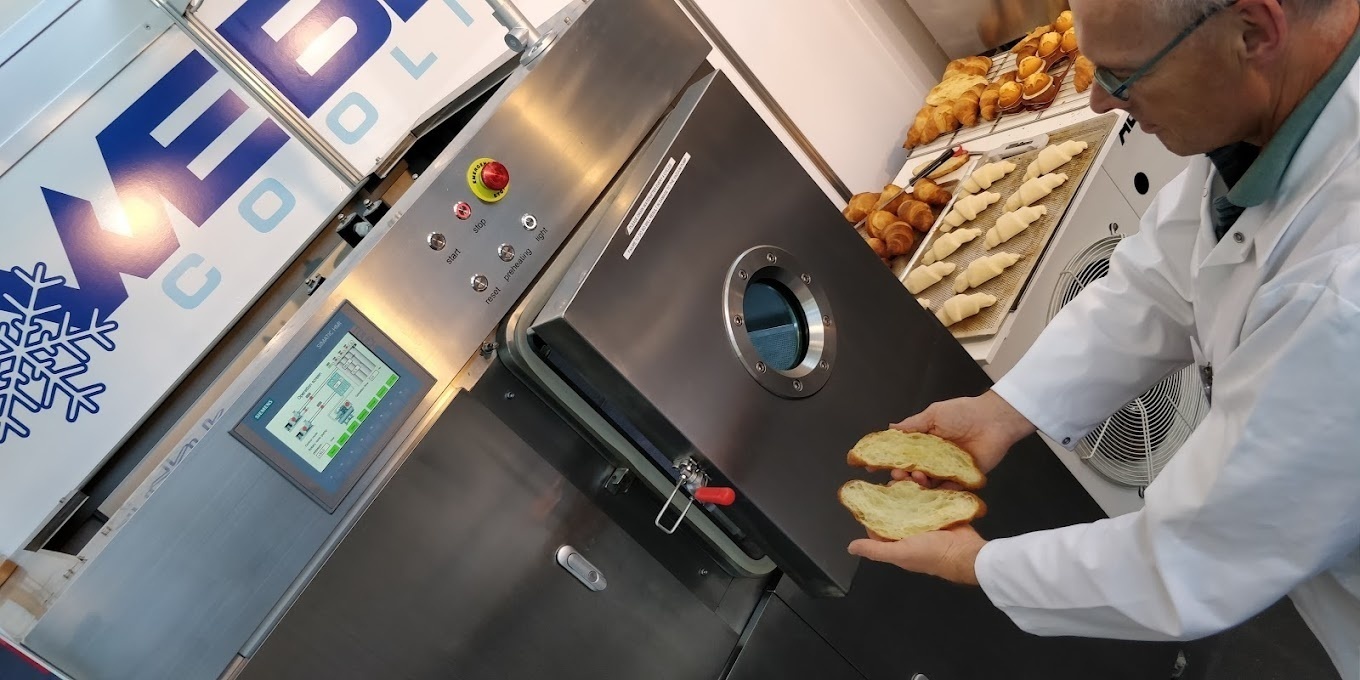Vacuum cooling is an advanced pre-cooling method that leverages the principle of evaporation to rapidly reduce the temperature of fresh produce. This process is unique because it cools the product from the inside out by causing moisture within the product to evaporate, which absorbs heat and leads to a quick drop in temperature. Here's a step-by-step breakdown of how vacuum cooling works:
- Product Placement: Fresh produce, such as vegetables, fruits, or flowers, is placed inside a vacuum cooling chamber. The chamber is designed to be airtight to ensure the process works effectively.
- Vacuum Creation: Once the produce is inside, the chamber is sealed, and a vacuum pump removes the air from the chamber. This reduction in pressure lowers the boiling point of water, causing moisture within the produce to evaporate at a much lower temperature than usual.
- Moisture Evaporation: As the pressure continues to drop, the moisture inside the produce begins to evaporate. This evaporation process is what cools the produce. Since the moisture comes from within the product itself, it ensures that both the surface and the core of the produce cool evenly and rapidly.
- Rapid Cooling: The cooling process typically takes between 15 to 30 minutes, depending on the type of produce and its water content. During this time, the produce reaches a uniform temperature throughout, significantly reducing the risks of spoilage and bacterial growth.
- Energy Efficiency: Vacuum cooling is not only fast but also energy-efficient. Traditional cooling methods require more energy and time to achieve the same results. With vacuum cooling, energy consumption is lower, leading to cost savings for producers and distributors.
Benefits of Vacuum Cooling
- Uniform Cooling: Unlike traditional cooling methods, which may cool the surface of the product faster than the core, vacuum cooling ensures that the entire product reaches the same temperature. This uniformity is crucial for extending the shelf life of the produce.
- Extended Shelf Life: By rapidly cooling the product and reducing its temperature uniformly, vacuum cooling slows down the respiration rate of the produce. This delay in the natural aging process leads to a longer shelf life, ensuring that the produce remains fresh for a more extended period.
- Cost-Effective: Vacuum cooling is more cost-effective than conventional cooling methods. The reduced energy consumption and faster processing time translate to lower operational costs, making it an economically viable option for large-scale producers.
- Versatility: Vacuum cooling is particularly effective for products with a high surface-to-weight ratio, such as leafy greens, spinach, mushrooms, and flowers. However, it is also suitable for more compact produce like beans, broccoli, celery, and sweetcorn. This versatility makes it an ideal solution for a wide range of perishable goods.
Step-by-Step Guide to Implementing Vacuum Cooling
- Assess Your Produce Needs: Determine which of your products would benefit most from vacuum cooling. Focus on items that are highly perishable or have a high surface-to-weight ratio.
- Choose the Right Equipment: Invest in a vacuum cooling system that suits your production scale. Consider factors like chamber size, cooling speed, and energy efficiency.
- Train Your Team: Ensure that your team is well-trained in operating the vacuum cooling system. Proper training will maximize the benefits of the technology and ensure consistent results.
- Monitor and Optimize: Regularly monitor the cooling process to ensure optimal performance. Make adjustments as needed to improve efficiency and product quality.
- Leverage the Benefits: Use the extended shelf life and uniform cooling as key selling points in your marketing strategy. Highlight the cost savings and sustainability of vacuum cooling to attract environmentally conscious consumers.
By following these steps, you can effectively implement vacuum cooling in your operations, improving product quality, extending shelf life, and reducing costs.




